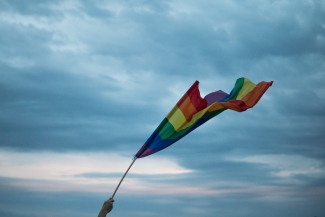
How to Help LGBTQ+ People with A Substance Use Disorder
June is Pride Month, and this weekend is WorldPride. It’s an important time to celebrate the history of LGBTQ+ people and to talk about the unique struggles they face today—including addiction.
While the equal rights movement has come a long way in the past decade or two, Americans who identify as lesbian, gay, bisexual, trans, or queer still face challenges. They are more likely than their straight peers to experience violence or harassment, to face discrimination at work or in their communities, and they are at greater risk of developing behavioral health and substance use disorders.
According to the Center on Addiction,
More than twice as many LGBT[Q+] adults compared to heterosexual adults reported using drugs in the past year. Those who identified as LGBT[Q+] were also more likely to smoke cigarettes, drink alcohol and binge drink, and nearly twice as likely to have had an alcohol or drug problem in the past year.
Additionally, LGBT[Q+] individuals are much more likely than heterosexual individuals to have depression, anxiety or other emotional or behavioral problems and to think about or attempt suicide, all of which increase the risk of substance use.
Substance use disorders often stem from attempts to self-medicate (perhaps to address untreated depression or anxiety), or to soothe stress or past trauma. Since LGBTQ+ people cope with these issues at higher rates, it makes sense that addiction would affect this community disproportionately. The social stigma and unfair treatment that too many LGBTQ+ people face increases their overall risk.
In order to recover, every patient with addiction needs a personalized treatment plan. LGBTQ+ patients are no exception. One size doesn’t fit all, and every element of individual identity and experience should be taken into consideration when addressing addiction. (For example, even though both a gay white man and a black trans woman fall under the LGBTQ+ umbrella, they may need different treatment approaches.) From specialized programs to queer peer counselors, there are lots of ways to create addiction treatment plans that will be most effective for these patients.
If you or someone you love are LGBTQ+ and are seeking treatment for a substance use disorder, remember this need for customization. As you browse treatment programs, ask questions and get detailed answers. Be sure that the treatment program reflects the LGBTQ+ experience specifically, and that it follows science-based best practices generally. Find a list of some key questions to ask at the bottom of this page.
If you’re worried about a queer friend’s mental health or substance use, encourage them to talk to a professional. The Trevor Project’s help line is a great place to start. It’s a crisis intervention and suicide prevention service specifically for LGBTQ+ people, and it's available to call, text, or instant message 24 hours a day, seven days a week.
And if you’re celebrating WorldPride this weekend, look out for your friends and fellow partygoers. Be prepared to spot the signs of an overdose—and be sure to carry your naloxone.




